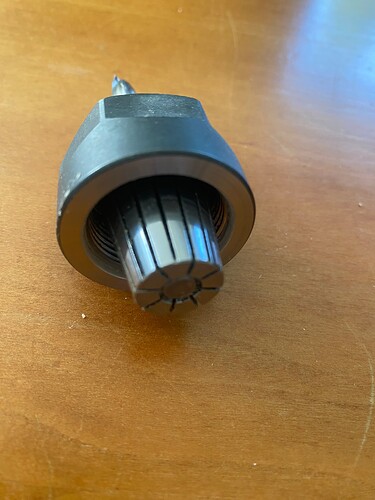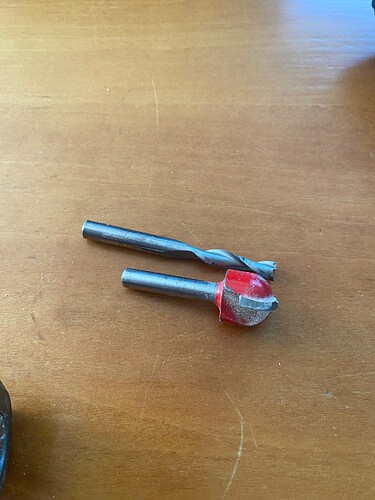I was having trouble using collets seemed like they never held like I thought they should, and I finally got frustrated enough to look up how there were supposed to work. I never knew that you are supposed to push the collet onto the nut till it clicks in. I was having trouble when I tried to take the collet out of the holder. I had to tap it with a hammer to get the collet out of the holder. It would then spring out of the block and usually end up on the floor. That was due to not inserting the collet into the nut properly, and I was also using the collet with too small a part in it. The collet was for 11/32 tool/part, and I was putting in a part that was only 3.25. So even after cranking down on it, it would still spin around during tapping. Well, I learned and corrected my mistakes and now everything is better. This seems a silly thing, but I am 71 and just learned about this little tidbit today. Learn something new every day.
Just a follow up question
I have some router bits that have shorter shanks
Are there shorter collet lengths?
I know the shank should be flush with the end of the collet for proper holding
I would have to look that up, but I would have to say no. Just use a smaller er number. I did learn that the ER number corresponds to the approximate size in millimeters. IE.an er 32 is just over 32mm at its widest point and so on to ER 20 and other sizes So you may simply want to get a smaller er number to hold your tools. if that is possible. in the case of a spindle you have to use the size it is built for.
maybe someone else can answer this question but if you absolutely have to use that bit and it does not extend to the full length of the collet is it possible to use a dummy plug to fill the gap. Instinctively I would say no ( sounds dangerous) but has anyone tried it with success?
With ER collets (vs R8, R5 etc collets) it’s more critical to have the maximum shank insert depth available in the collet vs a rule like “flush with the end”. You’ll find many end mills have a mark on the shank that will show the recommended insertion depth.
ER collets are different than other collet designs because they hold the entire length of the collet. Other designs hold at the top or face of the collet (the long slits on those are just to provide the pivot point for the compression). Because of this design ER collets can hold a tool about 1mm smaller than its rated size.
So an ER collet is gripping the entire length of the shank up to the length of the collet. Stick out on the end of the collet doesn’t get you more grip but might bottom out in the spindle’s bore. That’s why the “flush with the end” rule of thumb came about. You won’t bottom out in the spindle if the shank is flush with the end of the collet. Stick out is okay if it doesn’t cause the tool to bottom out in the spindle. You can also use a small rubber ball in the spindle shaft to provide a bit of compression length. (Like the balls used by cabinet makers in the grooves of door frames to accommodate expansion of the panel.) If the shank of the tool hits the ball you won’t get too much stick out on the spindle end because as the collet nut is tightened and the tool is drawn up into the spindle it will compress the ball rather than leave you with a collet you couldn’t tighten properly because the tool end hitting the spindle bore end stopped you from tightening it sufficiently.
The bore of a spindle has a taper that compresses the leaves of the collet from the rear while the front has a taper that compresses from the face. That’s how they compress the full length. ER collets are also double cut - half the slits come from the front and half from the rear. The leaves pivot to provide compression from the top and bottom based on the direction the slit was cut.
So as long as you get the shank of your end mill in as far as possible (without getting the flutes in the collet) and that allows the shank to go at least as far as the ring, you’re good.
I think a dummy plug has potential to make this problem worse. The collet might tighten on the plug, and not the tool’s shank.
I have, for years and years, used cutters that don’t seat all the way in the collet.
Sometimes you just need the extra reach. I’ve broken the rule many times. Some tools live indefinitely without being inserted to the back of the collet.
Years ago I took it too far and used a big & long 1.25" diameter cutter, and inserted it into an ER32 collet maybe 30 or 40% of the collet depth. The cutter came out of the collet when it was spinning. It just dropped and cut the spoilboard real bad, but it could have really injured someone. Since then I make sure there’s more tool shank in the collet, but often not 100%.
I am not advocating anyone else do that, just commenting on my experience doing it.
Awesome reply Jim
Just learned something new
Thanks


